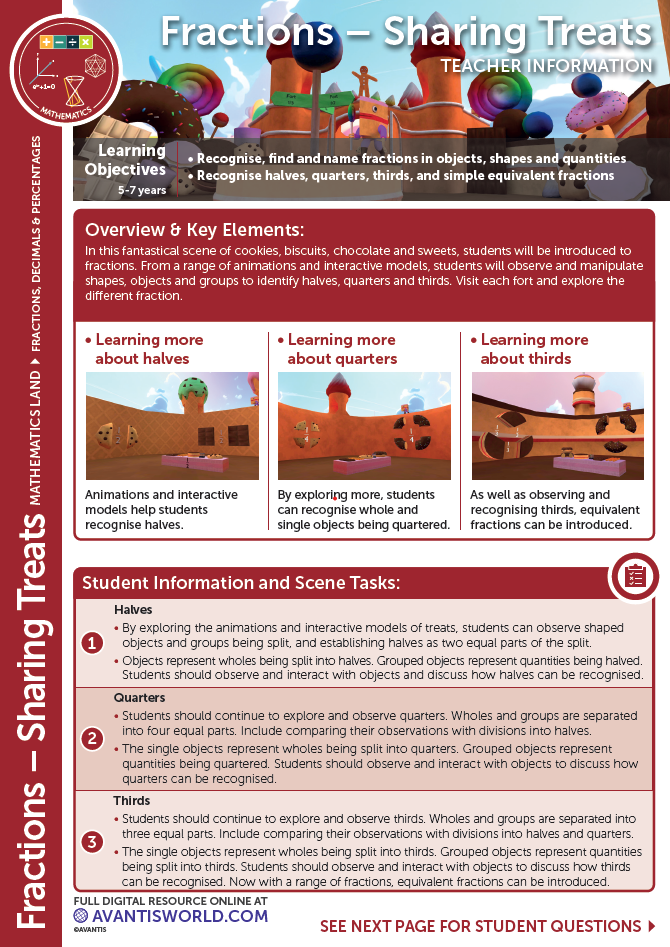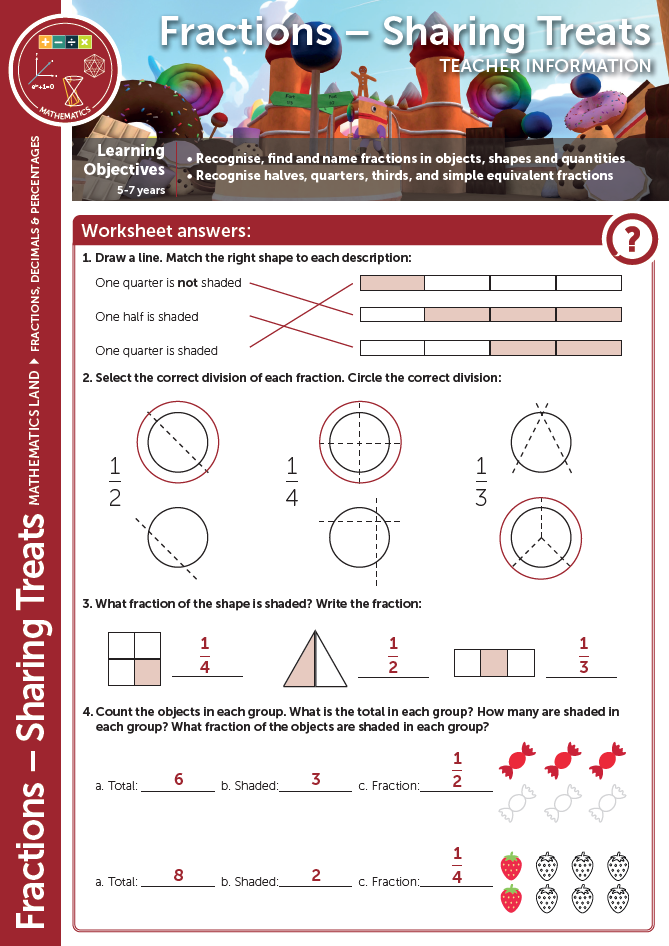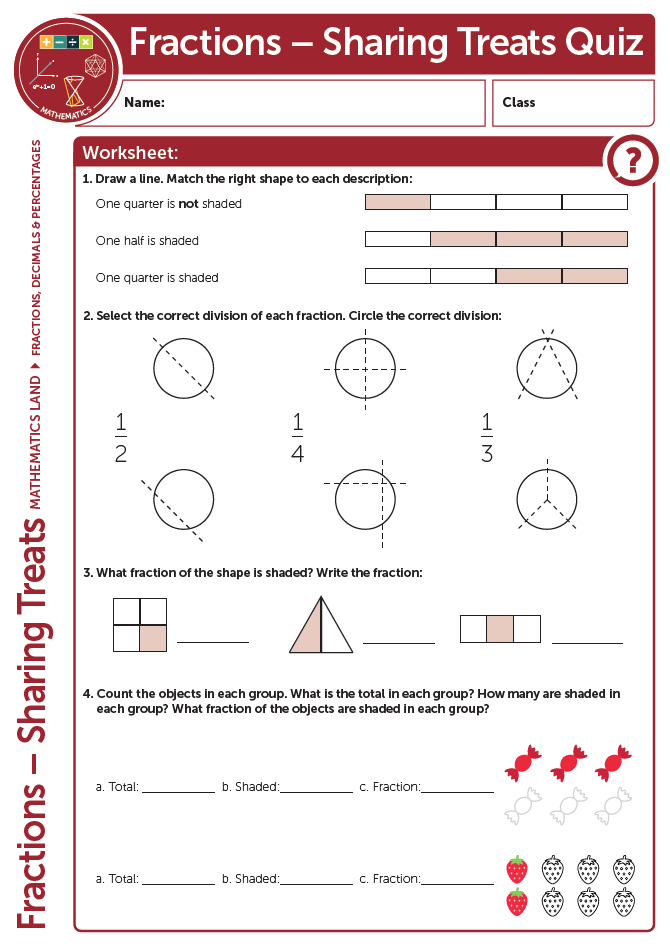 Loading...
Loading...
Initial language selection is based on your web browser preferences.
**Key Elements and scene Summary**
In this fantastical scene of cookies, biscuits, chocolate and sweets, students will be introduced to fractions. From a range of animations and interactive models, students will observe and manipulate shapes, objects and groups to identify halves, quarters, and thirds.
Visit each fort and explore the different fractions. Explore the area outside the forts.
# Learning objectives
1. Recognise, find and name fractions in objects, shapes and quantities{.info}
2. Recognise halves, quarters, thirds, and simple equivalent fractions.{.info}
# Halves{.objective .objective1}
By exploring the animations and interactive models of cookies, biscuits, chocolate bars, lollypops and sweets, students can observe shaped objects and groups being split. By establishing halves as two equal parts of the split, the animations can be used to lead a discussion as to which treat models shapes split into halves being made from a whole.
The shaped objects represent wholes being split into halves. Grouped objects represent quantities being halved. Lead the students to observe and identify them and discuss the differences with other animations of shapes. Interactive objects can be split into halves too. Move parts of interactive models and allow students to establish which ones split to make halves.
# Quarters{.objective .objective2}
Students should continue to explore and compare the animations of objects being split and groups being divided. This time, observations should be focused on identifying quarters and how wholes are separated into four equal parts. High order tasks should also include comparing their observations with other divisions.
Students should be encouraged to identify which interactive objects and groups can be split into quarters. Discussions should highlight shapes and groups make up four equal parts of the whole.
# Thirds{.objective .objective3}
Students should continue to explore and compare the animations of objects being split and groups being divided. This time, observations should be focused on identifying third and how wholes are separated into three equal parts. High order tasks should also include comparing their observations with other divisions.
Students should be encouraged to identify which interactive objects and groups can be split into thirds. Discussions should highlight shapes and groups make up three equal parts of the whole. Once all three fractions are covered, it may be a good opportunity to introduce equivalent fractions.
# Teacher Resources
### Download Teacher Notes
[](https://avnfs.com/x8wxSwCHzJ8AKvEczKqoosjx_OXAueNOf4V8cPfk7IE?size=1044796&type=application%2Fpdf&name=Fractions+%E2%80%93+Sharing+Treats+Teachers+Notes+1.pdf)
### Student Worksheet Answers Document
[](https://avnfs.com/1ViXzv2m7SRkhcz-fEFFlA5yruMLyLmtTnJSAb9_ktk?size=737152&type=application%2Fpdf&name=Fractions+%E2%80%93+Sharing+Treats+Teachers+Notes+2.pdf)
### Download Student Worksheet Document
[](https://avnfs.com/v3XWUAJwjLtC_jUe5Mbpf0txx2QSKsAeRHTXE550kw4?size=210017&type=application%2Fpdf&name=Fractions+%E2%80%93+Sharing+Treats+Teachers+Notes+3.pdf)